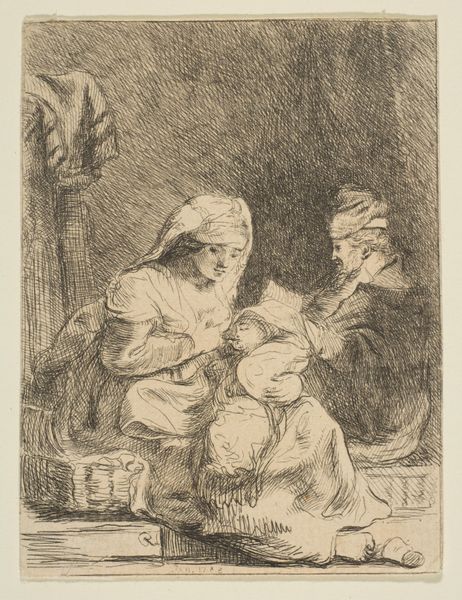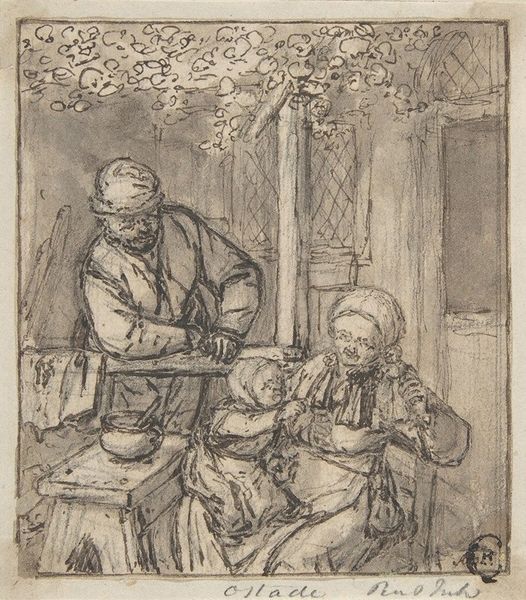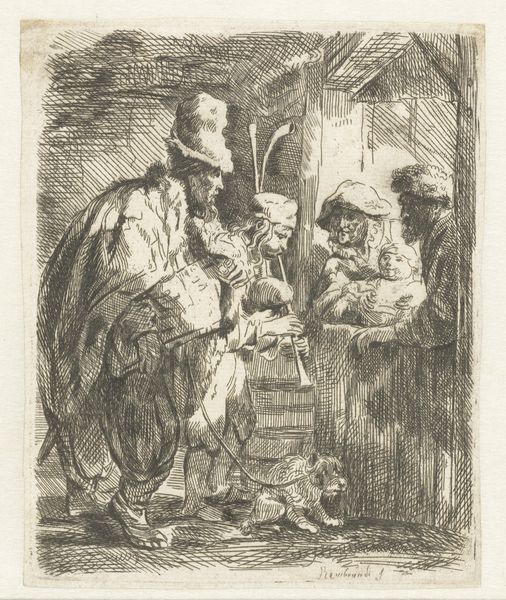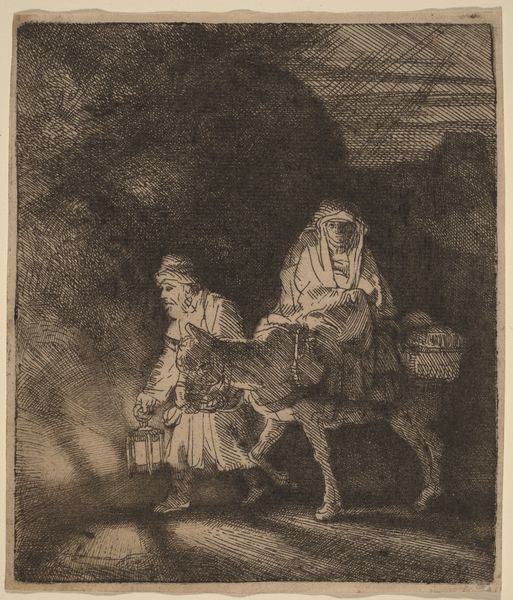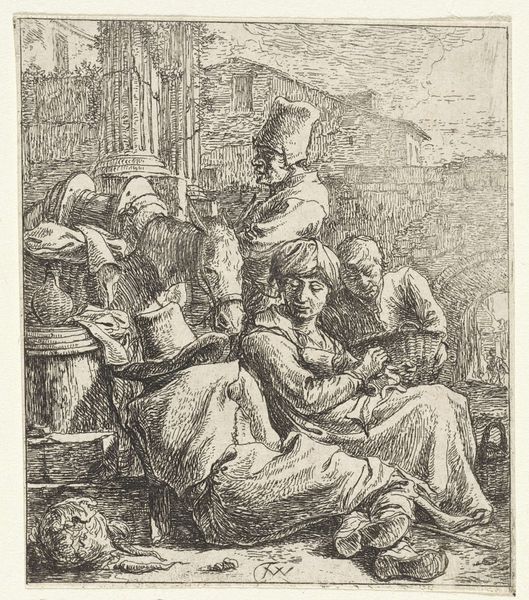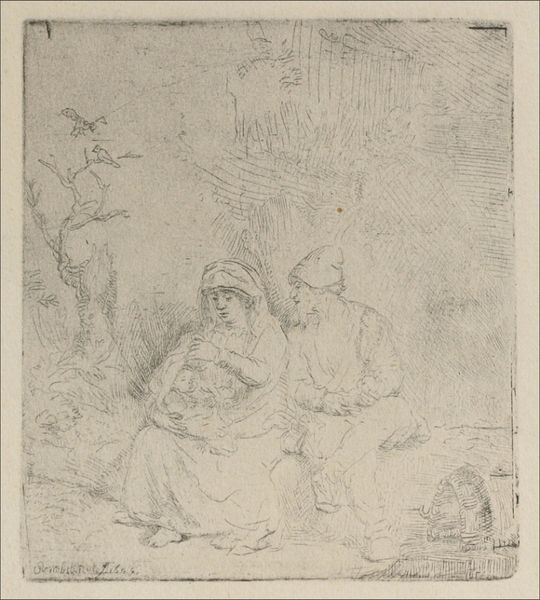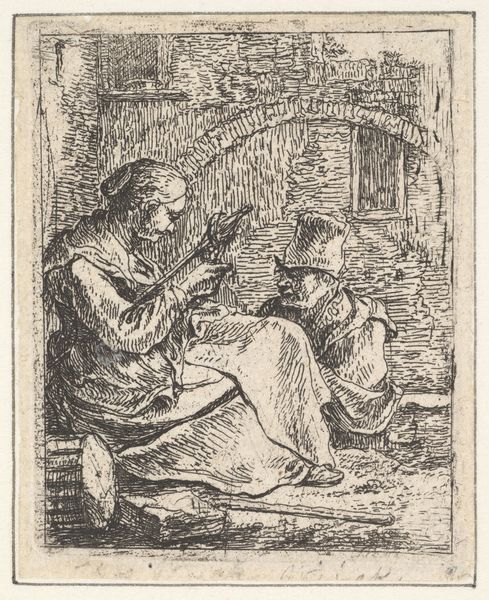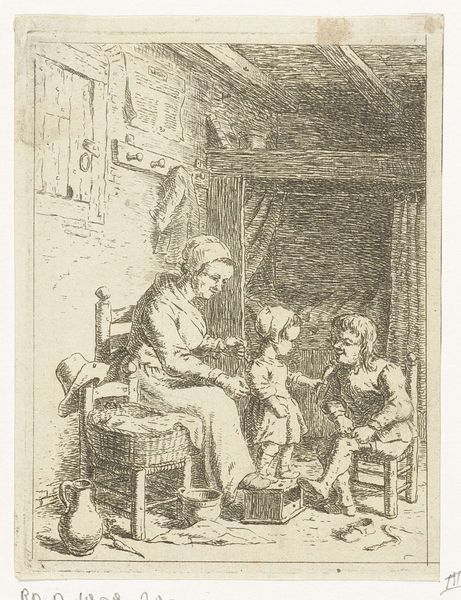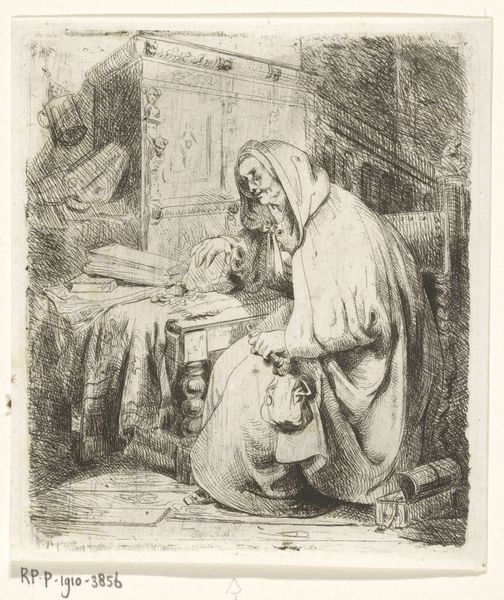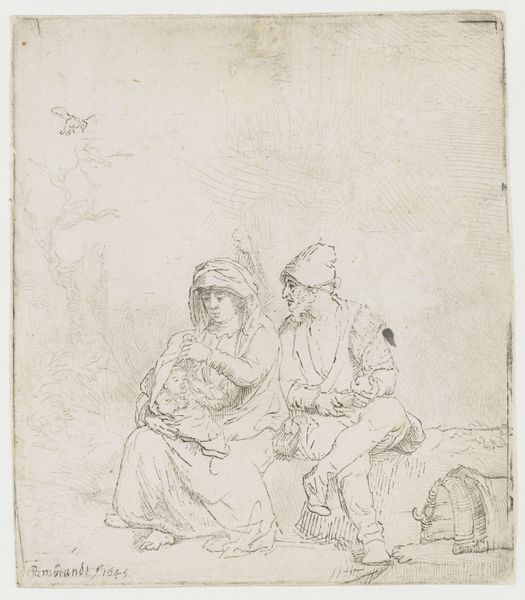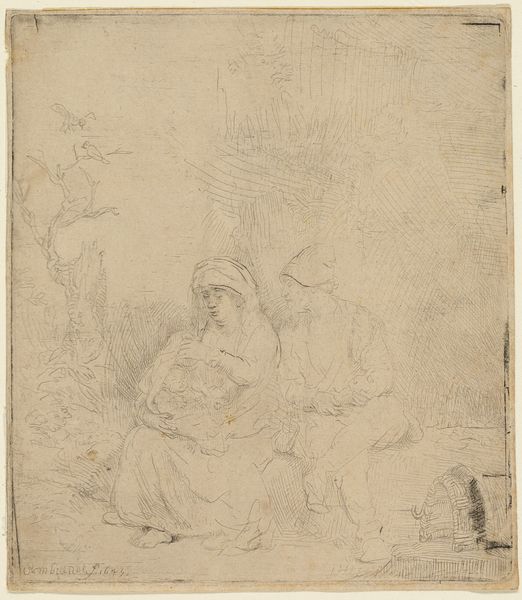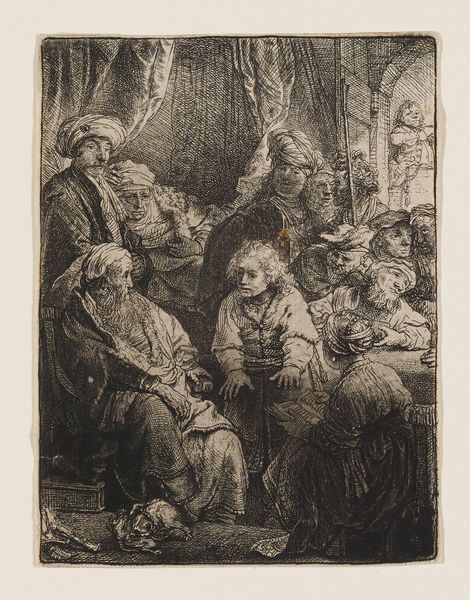
print, etching
#
narrative-art
#
baroque
#
dutch-golden-age
# print
#
etching
#
figuration
#
line
#
history-painting
Dimensions: 9 x 7 cm
Copyright: Public domain
Rembrandt van Rijn made this etching of The Holy Family in the Dutch Republic sometime in the 17th century. Rather than grandly depicting a divine scene, Rembrandt has created a small intimate domestic interior. The visual language Rembrandt uses is a product of his own time. The Dutch Republic was a Protestant country, in which the Catholic use of images was often frowned upon. This meant that artists had to find new ways to depict religious scenes in a way that would be acceptable to the public. Here, we can see how Rembrandt has avoided the traditional iconography of the Holy Family. Instead, he presents us with a very human scene of a family in their home. Rembrandt was also working at a time when the art market was becoming more and more commercialized. Artists were no longer simply working for the church or the aristocracy, but for a wider public, whose tastes were becoming more bourgeois. Rembrandt’s small etching reflects the changing nature of artistic patronage. To fully understand Rembrandt’s vision of the Holy Family, we might look at the history of religious imagery in the Netherlands, the economics of the art market, and the biography of the artist himself. By doing so, we can appreciate how he challenged the social norms and institutional expectations of his day.
Comments
No comments
Be the first to comment and join the conversation on the ultimate creative platform.
